Cards/Mounting

A Few Photographic Formats and Photographic Processes
Card Photographs: Most popular in the nineteenth century, which were the same size as calling cards. Cartes de visite were usually produced with albumen prints from wet collodion negatives. A camera with four, eight or more lenses and movable plate holder was used and a contact print created and them they were cut apart and mounted on cards.
Card Photographs: Most popular in the nineteenth century, which were the same size as calling cards. Cartes de visite were usually produced with albumen prints from wet collodion negatives. A camera with four, eight or more lenses and movable plate holder was used and a contact print created and them they were cut apart and mounted on cards.
Carbon Print
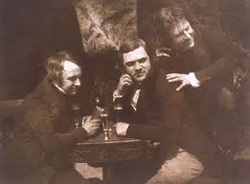
http://www.charlesisaacs.com/artists/images.php/1/Adamson
Carbon Print: Developed by Sir Joseph Wilson Swan in 1864. This process used bichromated gelatin which becomes soluble where not exposed to light and insoluble when exposed to light and allowing parts of the gelatin to be washed away.
Cellulose Nitrate Film
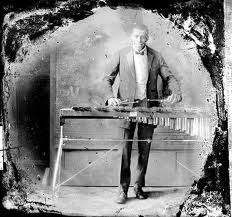
http://sirismm.si.edu/siris/top_images/acah.top.09_2006.htm
Cellulose Nitrate Film: Developed for sheet films in 1913. The film was comprised of a nitrocellulose base, a layer of nitrocellulose dissolved in wood alcohol and solvents and the dry gelatin emulsion.
Tintypes

http://www.cliffhouseproject.com/tintypes/tintypes.htm
Tintypes: Developed by Hamilton L. Smith in Ohio in 1856. The process begins with wet collodion and placed on thin sheets of iron that had been lacquered black or chocolate brown. They were cheaper and more durable than daguerreotypes.
Ambrotypes
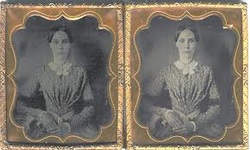
http://www.stereoviews.com/dagstins.html
Ambrotypes: They are similar to daguerreotypes, but were printed on glass. These were colored by hand and put in cases. They were also cheaper than daguerreotypes.
Cyanotype
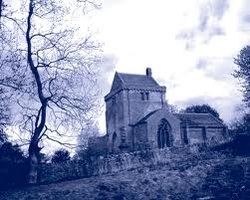
http://www.emanueleferonato.com/2006/08/19/cyanotype-effect-photoshop-action/
Cyanotype: These were created with a plain paper process and introduced by 1842 by Sire John Herschel. The process involved coating paper with a light-sensitive solution. The paper was then exposed to light under a negative and washed in water.
Stereographs
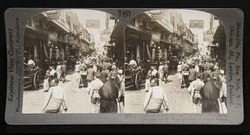
http://cnx.org/content/m13786/latest/
Stereographs: Photographic images placed side by side. These were taken with cameras that had two lenses side by side so that exposure happened simultaneously. These are commonly known to be used with different photographic processes like daguerreotypes, ambrotypes, wet plate glass positives, mounted salt prints, albumen prints and gelatin prints.
Daguerreotypes
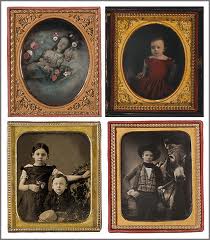
http://chnm.gmu.edu/cyh/primary-sources/175
Daguerreotypes: Created by Daguerre in 1839 France. Created by a copper plate that was coated with silver and then cleaned and finely polished. The plate was placed in a small box, where it was exposed to iodine vapors for up to 30 minutes. This sensitized plate was then placed in a camera and exposed to lights.
Plain Salted Prints

http://www.spartacus.schoolnet.co.uk/DSfarmer.htm
Calotype process was developed by Talbot in 1839. The light sensitive material itself is soaked into the paper instead as an emulsion. This process involves making paper negatives using silver iodine as the light-sensitive substance and the image was developed-out in gallic acid or after it was fixed and dried the negative was also waxed or oiled to increase its transparency.
Photogravure

http://www.photogravure.com/blog/page/4/
Photogravure was patented by Karl Klic in Vienna in 1879, which was used extensively for book illustration. The process involves a metal printing plate that was sensitized with hichromated gelitin and was then exposed and washed. The plate is then etched in acid and cleaned before being inked and printed in an engraving process.
Woodburytype
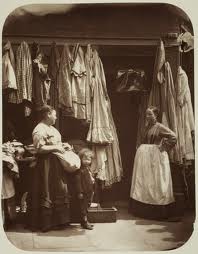
http://www.flickr.com/photos/george_eastman_house/3333249105/
Woodburytype was patented in England by Walter Bentley Woodbury in 1866. Like most permanent photographic processes this relies on bichromated gelatin. The hardened gelatin print was then covered with warm pigmented gelatin and used as a printing plate in a hand press. Used for mainly book illustration, but also to produce loose prints.
Ritzenthaler, M. L., G. J. Munoff, M. S. Long (1984) Archives and manuscripts: Administration of Photographic Collections. Society of American Archivists. Chicago, Illinois.

